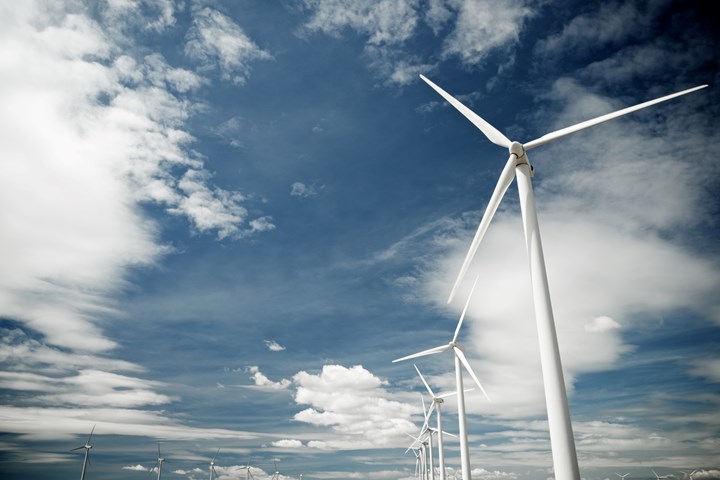Report forecasts record U.S. wind turbine installations for 2022
Demand for carbon fiber increases as decarbonization pushes transition to larger turbines, increased offshore market share more quickly than expected.

Photo Credit: Getty Images
As published in , the S&P Global Market Intelligence 2022 Electric, Natural Gas and Water Utilities Outlook Report is forecasting record levels of wind turbines to be installed in 2022. “It’s going to be a record year for renewable energy development in the U.S. in 2022, with 44 gigawatts [GW] of solar and 27 GW of wind power set to be installed alongside more than 8 GW of battery storage,” explains Richard Sansom, head of commodities research at S&P Global Market Intelligence.
According to the carbon fiber market overview presented by (AJR Composites) and (CarbConsult) at last week’s (Nov. 9-11, Salt Lake City, Utah, U.S.), wind turbine installations could consume 28,000 metric tons of carbon fiber in 2021 and reach 54,000 metric tons by 2026 with a compound annual growth rate (CAGR) of 14%.
This increase in carbon fiber follows the increase in wind turbine blade length. According to an , the average blade length 10 years ago was 30-40 meters (115 feet), but is now twice that. Average blade length is projected to further increase as repowering takes place in onshore turbines and as the offshore market increases its share of overall turbine installations.
Four years ago, offshore installations were 7- and 8-megawatt (MW) turbines with 70- to 90-meter-long blades. Now, however, GE’s (Paris, France) Haliade-X turbines, rated at 12 to 14 MW with 107-meter-long blades and Vestas’ 15 MW turbines with 115.5-meter-long blades are being tested, certified and readied for global installations. Experts say this transition is happening much more quickly than expected. (Read the BBC’s article, “.”)
The Global Wind Energy Council (GWEC, Brussels, Belgium), in its , expects offshore wind’s market share to increase from 6.5% today to 21% by 2025:
Photo Credit: GWEC , p. 70.
The CAGR for onshore wind in the next five years is 0.3% and GWEC expects annual installation of 79.8 GW. In total, 399 GW is likely to be built in 2021-2025.
The CAGR for offshore wind in the next five years is 31.5%. Annual installations are likely to quadruple by 2025 from 6.1 GW in 2020, bringing offshore’s market share in global new installations from today’s 6.5% to 21% by 2025. In total, more than 70 GW offshore is expected to be added worldwide in 2021-2025.
GWEC Market Intelligence expects that over 469 GW of new turbine capacity will be added in the next five years.
Related Content
-
The potential for thermoplastic composite nacelles
Collins Aerospace draws on global team, decades of experience to demonstrate large, curved AFP and welded structures for the next generation of aircraft.
-
Otto Aviation launches Phantom 3500 business jet with all-composite airframe from Leonardo
Promising 60% less fuel burn and 90% less emissions using SAF, the super-laminar flow design with windowless fuselage will be built using RTM in Florida facility with certification slated for 2030.
-
Infinite Composites: Type V tanks for space, hydrogen, automotive and more
After a decade of proving its linerless, weight-saving composite tanks with NASA and more than 30 aerospace companies, this CryoSphere pioneer is scaling for growth in commercial space and sustainable transportation on Earth.






